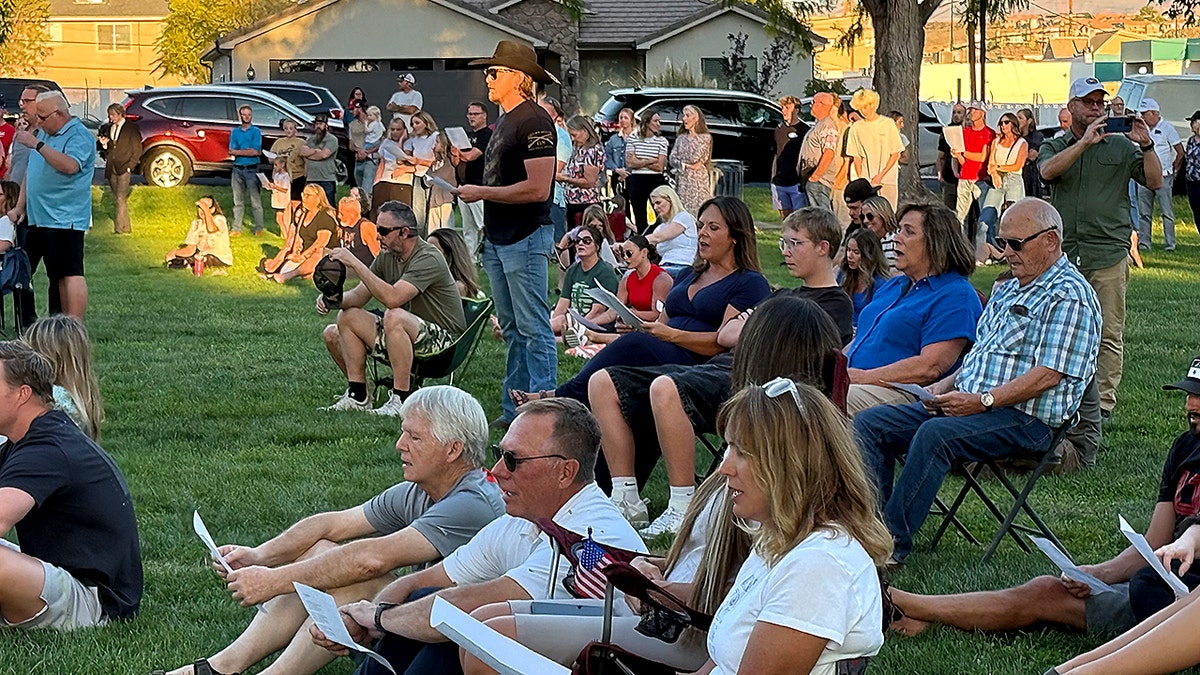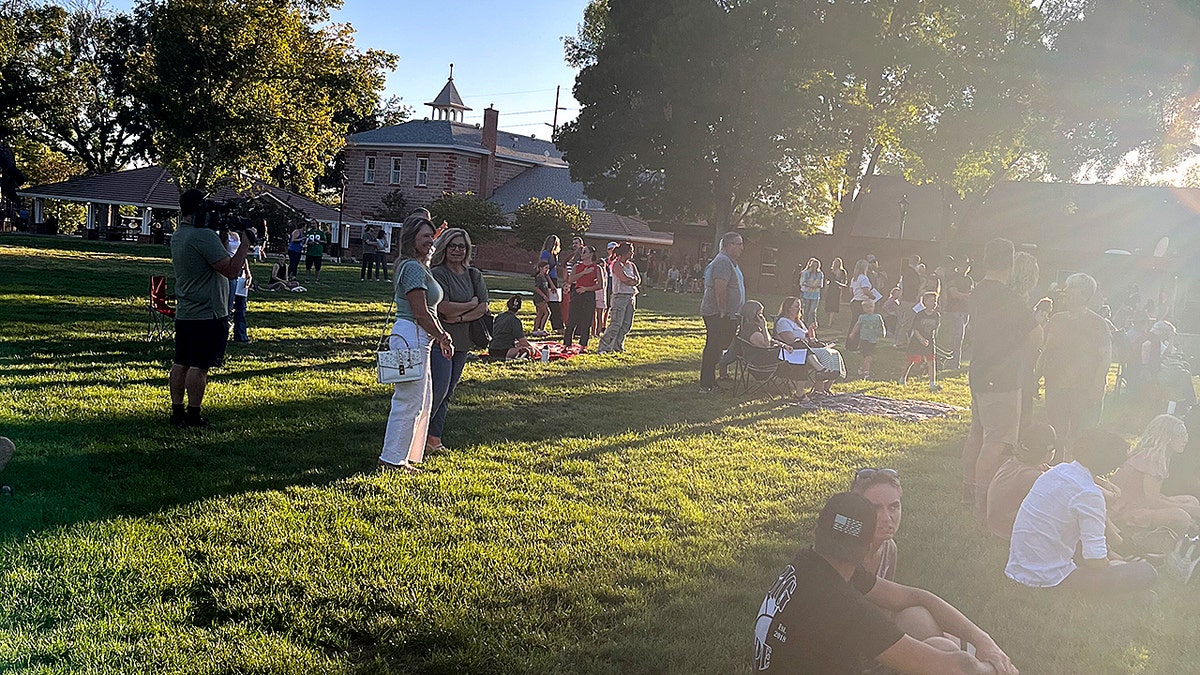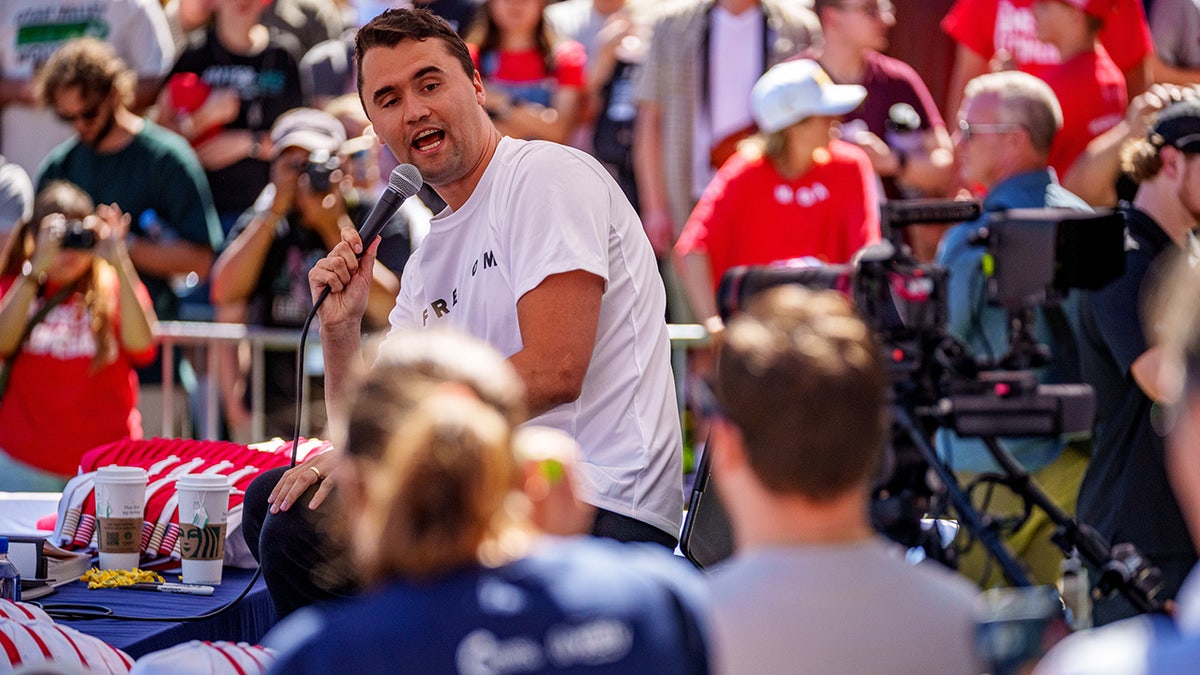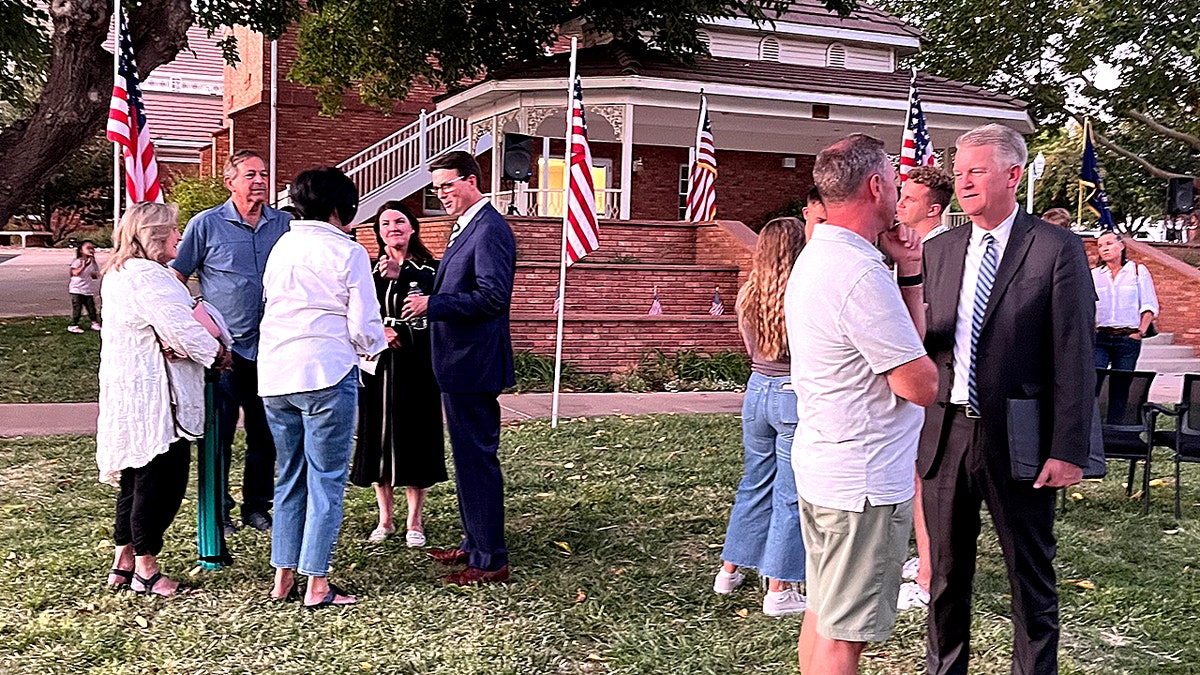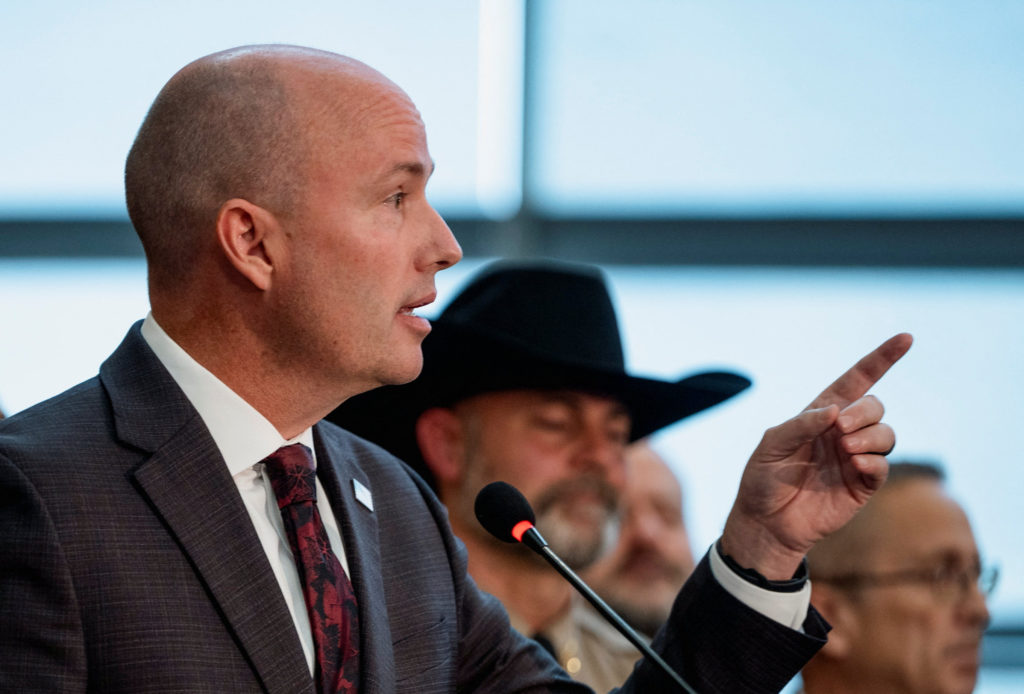Six campus police officers worked the event, which drew 3,000 people, at Utah Valley University where the conservative activist was shot, authorities said.
OREM, Utah (AP) — Less than two weeks before Charlie Kirk’s assassination in Utah, a sheriff’s department in central California conducted three days of reconnaissance to prepare for a speech by the conservative firebrand at a local church in politically friendly territory.
Officials researched potential escape routes and identified local activists opposed to Kirk. On the day of the indoor event in Visalia, which drew 2,000 people, some 60 law enforcement officials monitored Kirk’s movements to and from the church, even deploying a drone to secure surrounding rooftops, said Tulare County Sheriff Mike Boudreaux.
“The very nature of Charlie Kirk coming in requires you take special attention to the nuances of what could possibly happen,” Boudreaux said. “He’s a high profile name and personality. Not only do we have to provide for the safety of people attending, we have to provide for the safety of him.”
By contrast, Kirk’s outdoor event at Utah Valley University last week was out in the open, but with far less security. Six campus police officers — about a quarter of the force — worked the event, which drew 3,000 people, Jeff Long, the campus police chief, said last week. The department hasn’t said whether they inspected nearby rooftops; the suspect shot and killed Kirk from atop a building hundreds of feet away.
As he crisscrossed the country to spread his conservative ideals at college campuses, Kirk preferred to be as close to students as possible, allowing him to strike up conversations with passersby. His level of protection varied greatly — campus police often took the lead on overall security, while Kirk’s private detail focused on up-close protection.
His assassination at Utah Valley has drawn even more attention to the role that campus police departments play in protecting high-profile and divisive political figures who regularly make college visits. Security experts have questioned everything from the number of officers deployed to the decision to hold the event outside, where Kirk ended up in the direct line of sniper fire.
The university’s security plan is not part of the Utah Department of Public Safety’s investigation into the shooting, department Commissioner Beau Mason said.
Utah House Speaker Mike Schultz, a Republican, said lawmakers may order a review of security measures at Utah Valley following the assassination.

When Kirk spoke at Illinois State University in April, more than a dozen campus police officers patrolled the 700-person crowd, and more officers watched cameras trained on nearby buildings from an operations center. The same month, University of Wyoming police assigned about 15 officers to an indoor Kirk appearance.
In other cases, arrangements were similar to last week’s debate in Utah. At an outdoor Michigan State University event, a student organizer with the campus Turning Point USA chapter said there were eight to 10 campus officers. Kirk was founder of Turning Point USA, one of the nation’s largest political organizations with chapters on high school and college campuses.
Kirk’s own security team of around six people was present at each event.
Outdoor events are harder to secure
Security experts told The Associated Press they expect to see more events held indoors to protect against similar attacks, as outdoor events greatly increase vulnerability. College campuses are generally open and accessible, making them extremely susceptible to shootings, said Don Aviv, CEO of the security firm Interfor International.
Without monitoring rooftop access and blocking shooter sightlines, Aviv said, “it doesn’t matter how many armed personnel you have ringing the speaker, you would not have been able to protect against a long gun.”
Kirk requested to speak outside at Utah Valley so that he could engage with students, spokeswoman Ellen Treanor told the Salt Lake Tribune. When he visited campus in 2019, he spoke in a ballroom.
The desire by Kirk’s team to make him as accessible as possible complicated security planning, said Aaron Woodruff, police chief at Illinois State University.
“It makes it hard to protect somebody when you have people on all sides of him,” Woodruff said.
Woodruff ran a security plan past Kirk’s team by phone and then did a walk-through on site. Security cameras trained on nearby buildings allowed officials to monitor rooftops and surrounding areas, Woodruff said.
The up-close nature of Kirk’s interactions appealed to his followers, said Alex Bitzan, the TPUSA chapter president at Michigan State, who helped organize an April event held on a campus lawn.
“People are drawn to the open conversation. People are drawn to the fact that he’s unscripted,” Bitzan said. “When you’re outside in public like that, I don’t see what would solve what happened last Wednesday.”
Daniel Schoenherr, a photographer who covered the Michigan State event for the campus newspaper, recalled police on foot and at least two or three campus police cars nearby. Access to the event was easy. Schoenherr estimated that more than 1,000 people were there, many of them non-students. Kirk’s personal security focused on the immediate crowd.
“If someone was to throw a brick at Kirk — that wouldn’t happen. There was a lot of personal security close by,” Schoenherr said.
Experts say monitoring rooftops is key
The attempted assassination of President Donald Trump last year in Butler, Pennsylvania, should have raised concerns about the vulnerability of sniper attacks from nearby rooftops, said James Hamilton, who founded the FBI’s close protection school.
“Butler told people it’s not that hard to get a rifle, get up on a roof and shoot,” Hamilton said.
Private sector security has to make compromises based on clients’ desires, said Hamilton, who said it would have been much safer to hold Kirk’s events indoors.
A Utah Valley spokesperson did not respond to emailed questions seeking information about security planning, public safety officer assignments and whether rooftops were inspected.
“This is a police chief’s nightmare,” Long, the campus police chief, said last week. “You try to get your bases covered, and unfortunately today we didn’t, and because of that we had this tragic incident.”
For a University of Wyoming event in April, campus police reached out to Texas A&M and other universities Kirk had recently visited to better understand how they handled security, said campus Police Chief Josh Holland.
His officers checked the locks on building doors that would have allowed access to roof spaces. There were no metal detectors, Holland said, but the 1,800 attendees were prohibited from bringing bags into the venue at the university’s arts and sciences building. At Utah Valley, students were allowed to bring bags.
Turning Point USA did not respond to requests for comment about security protocol for Kirk’s events.
The organization said last week that Kirk had received “thousands” of threats but “always prioritized reaching as many young Americans as possible over his own personal safety.”
Brook reported from New Orleans and Lauer from Philadelphia. Associated Press journalists Jim Mustian and Jake Offenhartz in New York, Hannah Schoenbaum in Salt Lake City and Ed White in Detroit contributed reporting.
Source: Utah News




